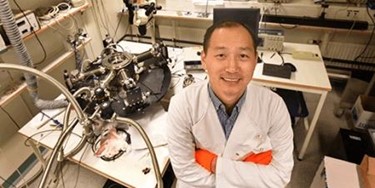Organic Solar Cells A Step Closer To Commercialization

Linköping University researchers, along with American and Chinese colleagues, demonstrated organic solar cells with much lower forces than before. The results have been published in Nature Energy.
A large group of researchers led by Feng Gao , a senior lecturer at the Department of Biomolecular and Organic Electronics at Linköping and He Yan at The Hong Kong University of Science and Technology, has developed organic solar cells where the loss of photon energy is only 0.61 eV, compared to the 0.88 eV which is the lowest one measured previously.
This means that the energy losses in the organic solar cells are now approaching levels at 0.5 eV in silicon-based inorganic solar cells, which means another step closer to commercialization.
When the sun sends energetic photons against the organic semiconductor polymer in the solar cell, electrons move to an excited state. It formed a hole in the ground state as the electron still attracted to. The driving force is then, somewhat simplified, a measure of the energy required to release the electron from the excited state and get the actual charge transportation in the solar cell. To free electron combines polymer solar cell with an acceptor. The lower the driving force needed to create free charges - the lower the energy loss - the more efficient solar cell.
It has previously been used carbon compounds , fullerenes, as acceptors. They admittedly increases efficiency, but also makes the solar cell is unstable and sensitive to heat. Here, researchers have used a new type of polymer in the solar cell, but also a new and stable acceptor consisting of carbon, nitrogen, hydrogen and oxygen, providing an ultra fast charge formation with a low driving force.
- We have been developing a system with great potential to increase the energy efficiency of organic solar cells, said Feng Gao.
The research team , which also LiU professors Olle Inganäs and Feng Ling Zhang and postdoctoral Jonas Bergqvist and doctoral student Deping Qian included, the article demonstrated solar cells with an efficiency of 9.5 percent, which means that 9.5 percent of the energy of sun rays into electricity .
The record in energy efficiency for organic solar cells is around 11 percent and it is held by a research group where Feng Gao, Olle Inganäs and Deping Qian included. The article was published earlier this spring in Advanced Materials.
Source: Linköping University
